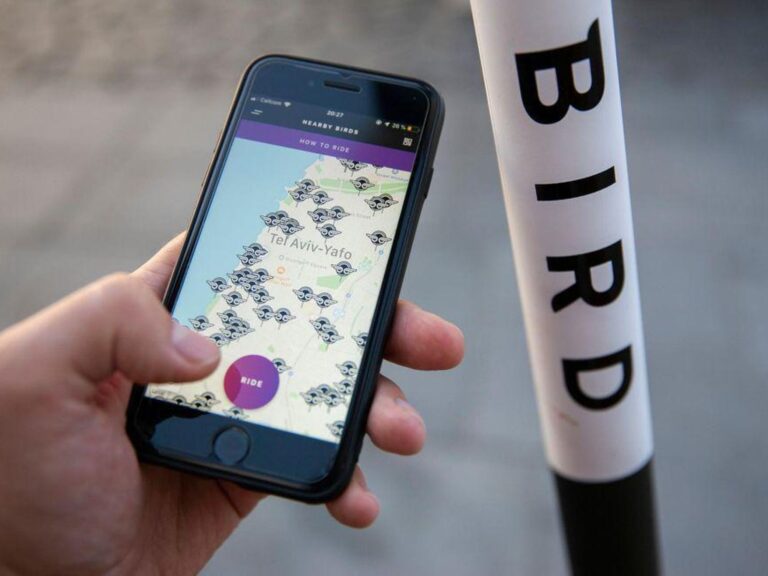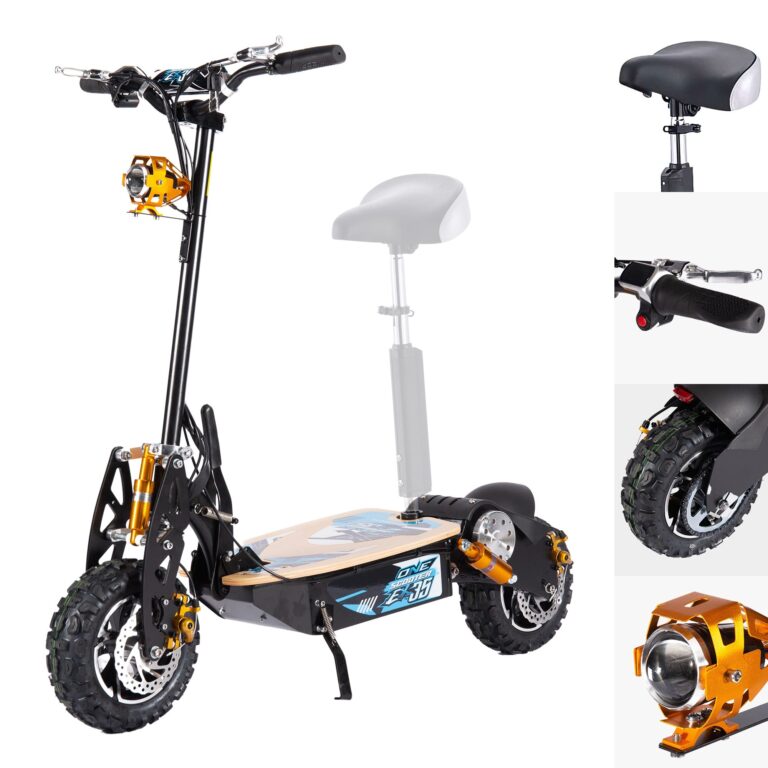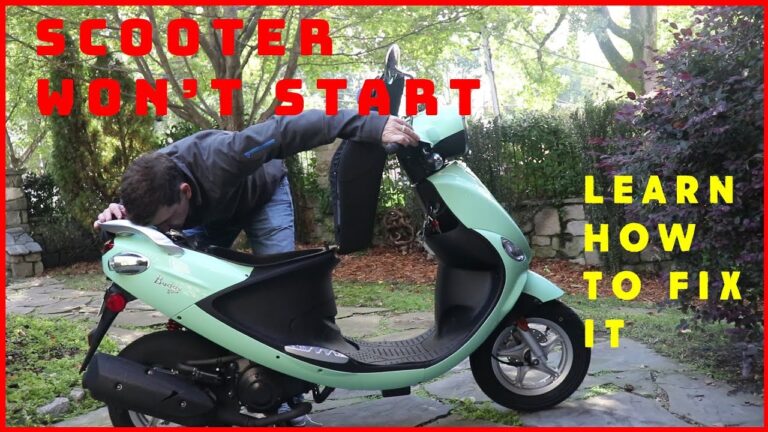Lance Scooter Not Starting: Troubleshooting Tips for Swift Resolutions

Lance scooter not starting may be due to a faulty ignition switch or a dead battery. We will explore common reasons why a Lance scooter may not start and provide possible solutions to troubleshoot the issue.
Lance scooters are popular modes of transportation due to their efficiency and compact size. However, there can be instances when your Lance scooter may refuse to start, leaving you stranded. One potential reason for this issue is a faulty ignition switch.
When the ignition switch malfunctions, it prevents the scooter’s engine from starting. Another common culprit is a dead battery, which can occur if the scooter has been standing unused for an extended period or due to battery drain from accessories left on. In the following sections, we will delve deeper into these potential causes and suggest troubleshooting steps to get your Lance scooter up and running again.
Common Reasons For A Non-Starting Lance Scooter
One common reason for a Lance scooter not starting is a faulty ignition system, which could include issues with the spark plug or ignition coil. Another possible cause could be a problem with the fuel system, such as a clogged fuel filter or a drained battery.
It is important to diagnose and address these issues promptly to ensure the scooter starts properly.
Is your Lance scooter giving you trouble starting up? Don’t worry, we’ve got you covered! In this section, we’ll explore the common reasons why your Lance scooter might not be starting. Read on to troubleshoot these issues and get back on the road in no time!
Dead Battery
The battery is often the culprit behind a non-starting Lance scooter. Here are some reasons why your battery might be dead:
- Old or faulty battery: If your battery is several years old or has been exposed to extreme temperatures, it may have reached the end of its lifespan. Similarly, a faulty battery can prevent your scooter from starting.
- Loose connections: Check the battery terminals to ensure they are tightly connected. Loose connections can disrupt the flow of electricity and prevent your scooter from starting.
- Parasitic draw: Certain electrical components can draw power from the battery even when the scooter is turned off. Over time, this can drain the battery and result in a non-starting scooter.
Fuel System Issues
Another common reason for a non-starting Lance scooter is a problem with the fuel system. Consider the following:
- Empty fuel tank: It may seem obvious, but always double-check that your fuel tank has enough gas. Sometimes, running out of fuel can be the simplest explanation for a non-starting scooter.
- Clogged fuel line: A clogged fuel line can prevent gasoline from reaching the engine. This can happen due to the buildup of dirt or debris in the line over time.
- Dirty carburetor: A dirty or damaged carburetor can disrupt the fuel-air mixture needed for combustion. Regular maintenance and cleaning of the carburetor are essential to ensure smooth starting.
Ignition System Problems
The ignition system plays a crucial role in starting your Lance scooter. Here are some common ignition system issues to consider:
- Faulty ignition switch: If the ignition switch is damaged or worn out, it may not deliver the necessary electrical current to start the scooter. This can result in a non-starting situation.
- Spark plug problems: A worn-out or faulty spark plug can prevent the ignition system from creating an adequate spark to start the engine. Regularly inspect and replace spark plugs as needed.
- Ignition coil failure: The ignition coil is responsible for generating the spark needed to ignite the fuel-air mixture in the engine. If the coil is faulty, it can lead to a non-starting scooter.
By understanding these common reasons for a non-starting Lance scooter, you can save time and money by diagnosing and potentially fixing the issue yourself. Remember to consult with a professional if you’re unsure about any repairs to ensure the best outcome for your scooter.
Troubleshooting Battery-Related Issues
If your Lance scooter is not starting, troubleshooting battery-related issues can help resolve the problem. Check the battery connections, test the voltage, and consider recharging or replacing the battery to get your scooter up and running again.
If your Lance scooter is not starting, the problem could be related to the battery. Here are a few steps you can take to troubleshoot battery-related issues:
Checking Battery Connections:
- Inspect the battery connections to ensure they are secure and free from corrosion.
- Make sure the positive and negative terminals are properly attached to the battery.
- Check for any loose or damaged wires that may be affecting the battery connection.
Testing Battery Voltage:
- Use a multimeter to measure the voltage of the battery.
- A fully charged battery should have a voltage reading between 12.6 and 12.8 volts.
- If the voltage is significantly lower, it may be an indication of a weak or dead battery.
Jump-Starting The Scooter:
- If the battery voltage is low, you can try jump-starting the scooter using jumper cables.
- Make sure both scooters are turned off before connecting the cables.
- Connect the positive (red) cable to the positive terminal of the working battery and the other end to the positive terminal of the dead battery.
- Connect the negative (black) cable to the negative terminal of the working battery and the other end to a metal part of the scooter that is not near the battery.
- Start the working scooter and let it run for a few minutes to give the dead battery some charge.
- Attempt to start your Lance scooter. If it starts successfully, remove the jumper cables, starting with the negative cable first.
Remember, if you are unsure about troubleshooting the battery-related issues on your Lance scooter, it is always best to consult with a professional mechanic or contact your local Lance dealership for assistance.
Fixing Fuel System Problems
Struggling to start your Lance Scooter due to fuel system issues? Get expert help in fixing the problem and getting back on the road. Stay worry-free with efficient solutions tailored to your scooter’s needs.
Is your Lance scooter not starting? Don’t worry, this guide will help you troubleshoot and fix any fuel system problems you might be facing. From ensuring your tank is filled with fuel to cleaning the carburetor, we’ve got you covered.
Let’s get started!
Ensuring There Is Fuel In The Tank:
- Check the fuel gauge or visually inspect the fuel tank to ensure it is not empty.
- If the tank is low on fuel, fill it up with fresh gasoline.
- Make sure there are no leaks in the fuel tank or fuel lines.
Checking For Clogged Fuel Lines:
- Locate the fuel lines running from the tank to the carburetor.
- Disconnect the fuel line from the carburetor.
- Inspect the fuel line for any signs of blockage or debris.
- Use compressed air or a soft brush to clean out any clogs.
- Reconnect the fuel line to the carburetor securely.
Cleaning The Carburetor:
- Locate the carburetor on your scooter, usually near the engine.
- Remove the air filter cover and air filter, if necessary.
- Spray carburetor cleaner into the carburetor, focusing on the jets and passages.
- Use a small brush or toothbrush to scrub away any built-up residue.
- Reinstall the air filter and cover.
Remember, if you’re not comfortable performing these tasks yourself, it’s always best to consult a professional mechanic. Proper maintenance and regular cleaning of the fuel system will help ensure your Lance scooter starts smoothly every time. Happy riding!
Resolving Ignition System Malfunctions
Resolving ignition system malfunctions can be critical when your Lance scooter won’t start. Troubleshooting the issue and checking components like spark plugs, ignition coils, and battery connections can help identify the underlying problem and get your scooter back on the road.
Ignition system malfunctions in your Lance scooter can be frustrating and prevent you from starting your scooter. However, understanding the common issues that can occur in the ignition system can help you troubleshoot and resolve the problem. In this section, we will look at three key areas to check when your Lance scooter is not starting: spark plug condition, ignition coil functionality, and ignition timing adjustment.
Checking Spark Plug Condition:
- Inspect the spark plug for signs of wear or damage.
- Look for fouling, which refers to the accumulation of deposits on the plug.
- Make sure the spark plug gap is within the manufacturer’s specified range.
- If the spark plug is dirty or damaged, it may need cleaning or replacing.
Testing The Ignition Coil:
- Begin by checking the ignition coil’s primary and secondary resistance using a multimeter.
- Ensure that the primary resistance falls within the manufacturer’s recommended range.
- Measure the secondary resistance and compare it to the specified value.
- If the resistance is outside the acceptable range, the ignition coil may need to be replaced.
Adjusting The Ignition Timing:
- Locate the ignition timing adjustment screw on your Lance scooter.
- Use a timing light to accurately measure the ignition timing.
- Adjust the timing by turning the adjustment screw clockwise or counterclockwise as needed.
- Aim for the timing to align with the manufacturer’s specifications.
By following these steps, you can effectively troubleshoot and resolve common ignition system malfunctions in your Lance scooter. Remember to always refer to your scooter’s manual for specific instructions and to prioritize safety precautions during any maintenance or repair work.
Additional Troubleshooting Tips
If your Lance scooter is not starting, here are some additional troubleshooting tips that can help you resolve the issue. Check the battery connection, inspect the spark plug, and ensure there is fuel in the tank.
Inspecting The Starter Motor:
- Sometimes, the reason your Lance scooter is not starting can be traced back to a faulty starter motor. Here are some troubleshooting tips to inspect the starter motor:
- Check if there is any corrosion or loose connections around the starter motor.
- Ensure that the starter motor wires are securely connected.
- Examine the brushes inside the starter motor for any signs of wear or damage.
- Use a multimeter to test the voltage at the starter motor to determine if it is receiving power.
- Replace the starter motor if it is not functioning or if all other troubleshooting measures fail.
Examining The Kill Switch And Kickstand Sensor:
- The kill switch and kickstand sensor play important roles in starting your Lance scooter. Here’s how to troubleshoot these components:
- Make sure the kill switch is in the “on” position. Sometimes, it may accidentally get switched off, preventing the scooter from starting.
- Inspect the wires connected to the kill switch for any damage or loose connections.
- Check the kickstand sensor to ensure that it is functioning properly. The sensor is designed to prevent the scooter from starting if the kickstand is down. If the sensor is defective, it may prevent the scooter from starting even when the kickstand is up.
- Clean the kickstand sensor and ensure it is properly aligned and making contact when the kickstand is up.
Troubleshooting The Electric Starter:
- If your Lance scooter is equipped with an electric starter, here are some troubleshooting tips to get it working:
- Check the battery to ensure it has enough charge. A weak battery can prevent the electric starter from functioning correctly.
- Inspect the wiring connected to the electric starter. Look for any frayed wires or loose connections that may be causing issues.
- Use a multimeter to test the voltage at the electric starter to ensure it is receiving power.
- If the electric starter is not engaging, it may be a problem with the starter solenoid. Inspect the solenoid and replace it if necessary.
- Consider replacing the electric starter if all other troubleshooting measures do not resolve the issue.
Remember, these troubleshooting tips should help you identify the cause behind your Lance scooter not starting. If the problem persists, it is recommended to seek professional assistance from a reputable mechanic or service center specializing in scooters.

Credit: tncb.ecowas.int
Frequently Asked Questions On Lance Scooter Not Starting
What Should I Do When My Scooter Is Not Starting?
To start your scooter when it’s not starting, check the fuel and battery levels. Ensure the spark plug is clean and the air filter is not clogged. If these steps don’t work, consult a professional mechanic.
Why Does My Electric Scooter Have Power But Wont Start?
Check the battery connections and ensure they are secure and clean. Troubleshoot the motor controller and throttle assembly.
How Do You Start A Lance Scooter?
To start a Lance scooter, turn on the ignition, twist the throttle grip, and press the electric start button.
How Do You Start A Scooter That Has Been Sitting?
To start a scooter that has been sitting, follow these steps: 1. Remove any stale fuel from the tank and replace it with fresh fuel. 2. Check the battery and make sure it is fully charged. 3. Inspect the spark plug and clean or replace it if necessary.
4. Give the scooter a thorough once-over, checking tires, brakes, and other components before attempting to start it.
Conclusion
Troubleshooting a Lance scooter that won’t start can be a frustrating experience. By following the steps outlined in this blog post, you can save yourself time, money, and the hassle of taking it to a mechanic. Start by checking the battery and spark plug, ensuring they are in good condition and properly connected.
If those components are fine, move on to examining the fuel system, including the fuel line, filter, and carburetor. Cleaning or replacing any faulty parts can often resolve starting issues. If the scooter still won’t start, it may be necessary to seek professional assistance.
Remember to conduct regular maintenance and follow the manufacturer’s guidelines to keep your Lance scooter in optimal condition. With the right troubleshooting techniques and a little patience, you’ll have your scooter back on the road in no time.





